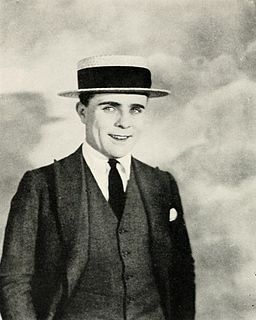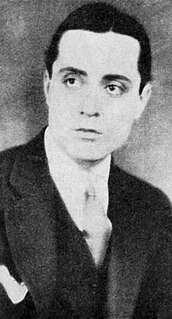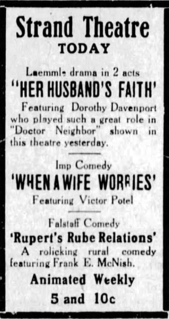
Bad Girl is a 1931 American pre-Code drama film directed by Frank Borzage and starring Sally Eilers, James Dunn, and Minna Gombell. The screenplay was adapted by Edwin J. Burke from the 1928 novel by Viña Delmar and the 1930 play by Delmar and Brian Marlowe. The plot follows the courtship and marriage of two young, working-class people and the misunderstandings that result from their not having learned to trust and communicate with one another. The film propelled then-unknown actors Eilers and Dunn to stardom. It was nominated for three Academy Awards, including Best Picture, and won for Best Director and Best Adapted Screenplay.

Loretta Young was an American actress. Starting as a child, she had a long and varied career in film from 1917 to 1953. She won the Academy Award for Best Actress for her role in the film The Farmer's Daughter (1947), and received her second Academy Award nomination for her role in Come to the Stable (1949). Young moved to the relatively new medium of television, where she had a dramatic anthology series, The Loretta Young Show, from 1953 to 1961. The series earned three Emmy Awards, and was re-run successfully on daytime TV and later in syndication. In the 1980s, Young returned to the small screen and won a Golden Globe for her role in Christmas Eve in 1986.

William Wallace Halleck Reid was an American actor in silent film, referred to as "the screen's most perfect lover". He also had a brief career as a racing driver.

Lila Lee was a prominent screen actress, primarily a leading lady, of the silent film and early sound film eras.

Clara Kimball Young was an American film actress, who was highly regarded and publicly popular in the early silent film era.

Mary Brian was an American actress, who made the transition from silent films to sound films.

Fannie Dorothy Davenport was an American actress, screenwriter, film director, and producer.

Bobby Vernon was an American comedic actor in silent films. He later became a writer and comedy supervisor at Paramount for W. C. Fields and Bing Crosby, when the sound era arrived. Blue-eyed with medium brown hair, he stood five feet and two-and-a-half inches, making him perfect for juvenile comedy roles. His comedies were popular with children.

June Clyde was an American actress, singer and dancer known for roles in such pre-Code films as A Strange Adventure (1932) and A Study in Scarlet (1933).

Catherine Townsend Johnson was an American stage and film actress.

Chili Bouchier was an English film actress who achieved success during the silent film era, and went on to many screen appearances with the advent of sound films, before progressing to theatre later in her career.

Dorothy Revier was an American actress.

Lucille Ricksen was an American motion picture actress during the silent film era. She died of tuberculosis on March 13, 1925 at the age of 14.

Patricia Ellis was an American film actress of the 1930s.

Dorothy Yost, later married as Dorothy Yost Cummings, was a prominent screenwriter whose career lasted from the silent era well into the sound era. Over her lifetime, she worked on more than 90 films, including her own screenplays. She was born in St. Louis, Missouri, and died in Monrovia, California.

Manuel Granada was an Argentine actor who appeared in American, Spanish, Argentine and Mexican films. For the first half of his career, he worked under the names Paul Ellis and Manuel Granado.

Motion Picture was an American monthly fan magazine about film, published from 1911 to 1977. It was later published by Macfadden Publications.

Her Husband's Faith is a 1916 American silent short film directed by Lloyd B. Carleton. The film is based on a story by Paul Machette. Eugene De Rue developed the screenplay. This domestic society drama's features Dorothy Davenport, T. D. Crittenden and Emory Johnson.

Two Mothers is a 1916 American silent short film directed by Lloyd B. Carleton. The film is based on a story by I.A.R. Wylie. Calder Johnstone developed the adaptation for the screen. The drama's features Dorothy Davenport, Alfred Allen and Emory Johnson.

Her Soul's Song is a 1916 American silent short film directed by Lloyd B. Carleton. The film is based on a story by Betty Schade. Calder Johnstone developed the screenplay. This drama's features Dorothy Davenport and Emory Johnson.




















